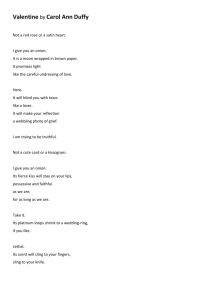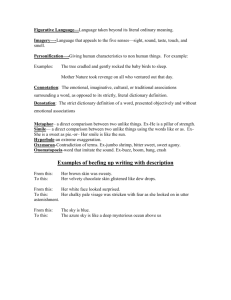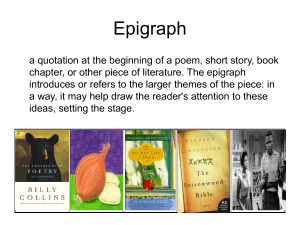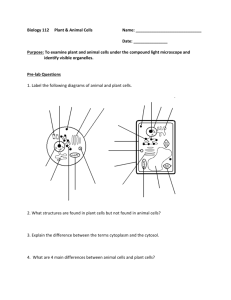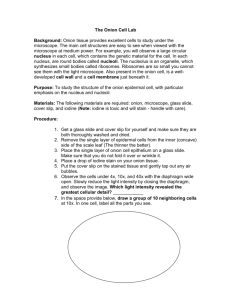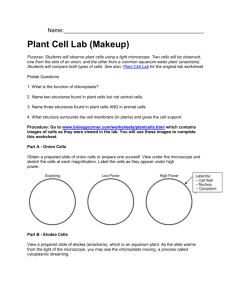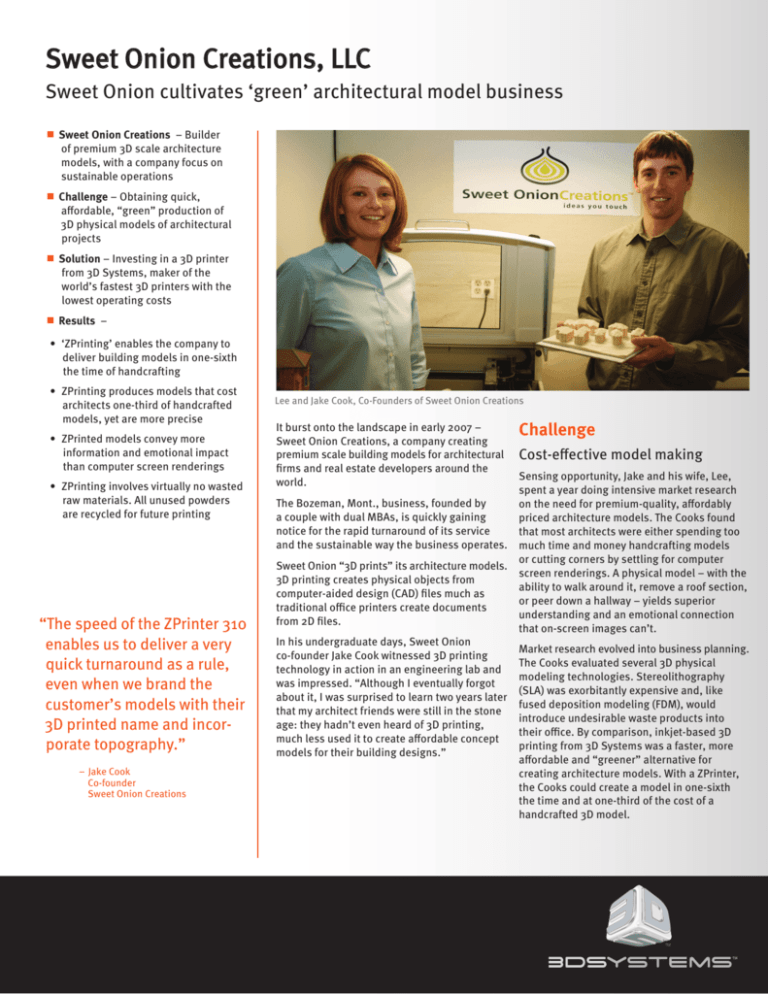
Sweet Onion Creations, LLC
Sweet Onion cultivates ‘green’ architectural model business
n
weet Onion Creations – Builder
S
of premium 3D scale architecture
models, with a company focus on
sustainable operations
n
Challenge – Obtaining quick,
affordable, “green” production of
3D physical models of architectural
projects
n
Solution – Investing in a 3D printer
from 3D Systems, maker of the
world’s fastest 3D printers with the
lowest operating costs
n
Results –
• ‘ZPrinting’ enables the company to
deliver building models in one-sixth
the time of handcrafting
• ZPrinting produces models that cost
architects one-third of handcrafted
models, yet are more precise
• ZPrinted models convey more
information and emotional impact
than computer screen renderings
• ZPrinting involves virtually no wasted
raw materials. All unused powders
are recycled for future printing
“The speed of the ZPrinter 310
enables us to deliver a very
quick turnaround as a rule,
even when we brand the
customer’s models with their
3D printed name and incorporate topography.”
– Jake Cook
Co-founder
Sweet Onion Creations
Lee and Jake Cook, Co-Founders of Sweet Onion Creations
It burst onto the landscape in early 2007 –
Sweet Onion Creations, a company creating
premium scale building models for architectural
firms and real estate developers around the
world.
Challenge
Cost-effective model making
Sensing opportunity, Jake and his wife, Lee,
spent a year doing intensive market research
The Bozeman, Mont., business, founded by
on the need for premium-quality, affordably
a couple with dual MBAs, is quickly gaining
priced architecture models. The Cooks found
notice for the rapid turnaround of its service
that most architects were either spending too
and the sustainable way the business operates. much time and money handcrafting models
or cutting corners by settling for computer
Sweet Onion “3D prints” its architecture models.
screen renderings. A physical model – with the
3D printing creates physical objects from
ability to walk around it, remove a roof section,
computer-aided design (CAD) files much as
or peer down a hallway – yields superior
traditional office printers create documents
understanding and an emotional connection
from 2D files.
that on-screen images can’t.
In his undergraduate days, Sweet Onion
Market research evolved into business planning.
co-founder Jake Cook witnessed 3D printing
The Cooks evaluated several 3D physical
technology in action in an engineering lab and
modeling technologies. Stereolithography
was impressed. “Although I eventually forgot
(SLA) was exorbitantly expensive and, like
about it, I was surprised to learn two years later
fused deposition modeling (FDM), would
that my architect friends were still in the stone
introduce undesirable waste products into
age: they hadn’t even heard of 3D printing,
their office. By comparison, inkjet-based 3D
much less used it to create affordable concept
printing from 3D Systems was a faster, more
models for their building designs.”
affordable and “greener” alternative for
creating architecture models. With a ZPrinter,
the Cooks could create a model in one-sixth
the time and at one-third of the cost of a
handcrafted 3D model.
© Sweet Onion Creations 2008
All Rights Reserved
© Sweet Onion Creations 2008
All Rights Reserved
© Sweet Onion Creations 2008
All Rights Reserved
Solution
Yellowstone Club Model
“On every criterion, the
ZPrinter 310 Plus made
the most sense.”
– Jake Cook
Co-founder
Sweet Onion Creations
3D Systems 3D printer
“On every criterion, the ZPrinter® 310 Plus
made the most sense,” says Jake Cook. The
couple considered other 3D Systems printers
that print in multiple colors – the only ones on
the market that can do this – but monochrome
turned out to be enough. “Although architects
are highly tuned esthetically, the tradition
is monochrome. In the design and approval
stage, the primary concern is form and space.”
Sweet Onion Creations’ early business focused
mostly on architects in the Bozeman/Big Sky
region of Montana. Their first job was a big one
– modeling luxury homes in the 13,600-acre
private golf, ski and wildlife “Yellowstone Club”
community. One of the buildings was a $155
million mansion. “It was three straight weeks
of nonstop model production, but the client
was delighted with the results,” says Cook.
“So were we.”
Results
Meeting Growing Worldwide
Demand
In August 2007, the couple took their business
global, offering architecture models via the company’s Web site, www.sweetonioncreations.com.
Architects now upload any computer-aided
design file and receive a finished architectural
model typically within a week. Since then the
company has been flooded with orders and
inquiries from around the world. Its global
presence has been fueled by this simple video
on their modeling process – http://www.
youtube.com/watch?v=rEzugxybKmA – posted
on YouTube.
The day after the Sweet Onion video hit the
’net, a Monday morning, the company received
an order from a restaurateur’s architect in
Birmingham, Ala. By Thursday, the model
was in the client’s hands, and by the next
Monday the architect was showing it off to the
restaurateur.
“The speed of the ZPrinter 310 enables us
to deliver a very quick turnaround as a rule,
even when we brand the customer’s models
with their 3D printed name and incorporate
topography, which very few other modelers are
doing these days,” says Cook.
An award brought more global attention. The
company was named the “greenest” company
among the Home-Based 100 selected by
StartupNation, an online business advice site
for entrepreneurs. The Cooks were delighted
with the award as validation of Sweet Onion’s
values and efforts. Although green is clearly
good marketing these days, many don’t realize
it is good business in the bottom-line sense,
notes Cook. “Electricity is expensive, so we
minimize it, which helps both our business
and the environment. By the same token, toxic
waste disposal is expensive, so we avoid it by
using a ZPrinter. That benefits our business
and the environment as well. No tradeoff.”
The company conserves electricity by enclosing
the 3D printer in a small room warmed by a
space heater. The office’s fluorescent lights
are reclaimed from a home renovation. The
company purchases a “green tag” from
Bonneville Environmental Foundation (a
windfarm user) for every model produced
to offset the electricity consumption. Sweet
Onion ships models in re-used cardboard
boxes filled with biodegradable packaging
peanuts. It offers discounts on models of
buildings designed for certification under
the U.S. Green Building Council’s Leadership
in Energy and Environmental Design (LEED)
standards and on models of buildings designed
by LEEDS-accredited professionals. Like many
ZPrinter users, Sweet Onion recycles the
powder from which 3D models are removed
after their printing. When a model arrives on
a client’s doorstep, the box contains a small
card explaining how Sweet Onion minimizes
environmental impact.
“The world is beginning to understand that
business is no longer at odds with sustainability,”
says Cook. “We’re gaining traction, loving what
we do, and minimizing our impact on natural
resources. The ZPrinter 310 Plus is a central part
of our business and vision. And though we’re
being careful about growth, we look forward to
the day we need two or three printers producing
multiple models at once.”
Sweet Onion Creations
P.O. Box 11022
Bozeman, MT 59719
www.sweetonioncreations.com
www.printin3d.com
333 Three D Systems Circle
Rock Hill, SC 29730 USA
Telephone +1 (803) 326-3948
moreinfo@3dsystems.com
Warranty/Disclaimer: The performance characteristics of these products may vary according to product application, operating conditions,
material combined with, or with end use. 3D Systems makes no warranties of any type, express or implied, including, but not limited to, the
warranties of merchantability or fitness for a particular use.
© 2012 by 3D Systems, Inc. All rights reserved. Specifications subject to change without notice. The 3D Systems logo and stylized text are
trademarks and 3D Systems and ZPrinter are registered trademarks of 3D Systems, Inc.
Issue Date January 2012

